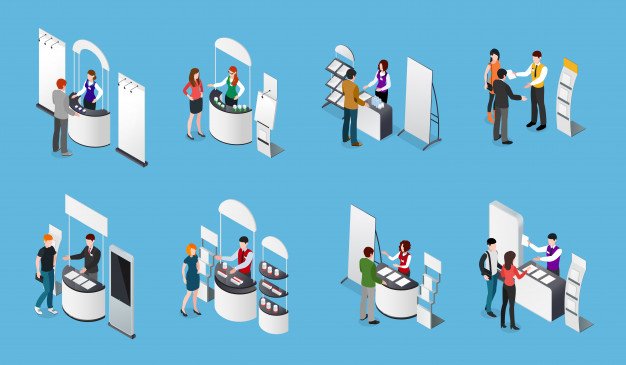It’s easy to find people who will swear that getting a massive ROI from a trade show booth is nearly impossible. That is not the case, by any means. Most likely, those people failed to use some of the tips in this article. Companies that have, however, have experienced massive success with their trade show booth. Here’s what they did.
1. Putting Branding First
For people who have never heard of your organization before, your booth is their first impression of your brand. If you can make it a positive one, that will result in them being more eager to do business with you. That’s why it’s crucial to make sure that your booth reflects the unique features of your brand.
Incorporating creativity into your branding can help, as it allows you to stand apart from other booths, encouraging more people to take an interest.
2. Having a Friendly Design
It’s almost certain that there will be other booths around, and attendees might not have enough time to have an in-depth interaction with all of them. That’s why having a design that not only showcases your brand but invites people is important. Brands that have worked with ExpoMarketing to create high-performing booths have been presented with unmatched designs.
It also helps to have staff surrounding the booth, so that people have someone to talk to and interact with when they decide to explore it. Attendees can also be treated to interactive such as touchscreens, through which they can learn more about your business while having fun.
3. Capitalizing on Word-of-Mouth Marketing
A successful trade show booth generates buzz long after the trade show itself. To do this, you need to have something that ensures that people keep talking about your business and the way you presented it. One of the most successful ways to achieve that is to hand out things like stickers and wearables. StickerYou has wide options of premium custom stickers for all your business printing and branding needs.
At the end of the event, you can give out prizes to people who wear your merch. It’s important to be strategic about the prizes and to make them things that people are likely to display in full view of others. That way, you’ll keep generating conversations about your brand and winning over new customers and clients.
4. Networking
Meeting attendees before the trade show can have a profound effect on how your booth performs. You’ll also be able to gather contact information from people so you can stay in touch and have a chance to convert them later on. When meeting people before a booth, you can
On the day of the trade show, people will be more likely to visit your booth because they’ll feel a sense of familiarity with it, unlike others that will seem completely alien. When meeting them, however, it’s important to focus less on talking about your business and what it does. Rather, you can try to gather as much information about them and what they do.
When people do visit your booth, you’ll be able to start a conversation based on how you’re equipped to help them with the problems they mentioned to you earlier.
Combining all these tips will ensure that you have a booth that will have a huge positive ROI, resulting in more clients and customers. The sooner you start thinking about how you’re goese tips, the more success you’re likely to have with your trade show booth.
Read Also:























